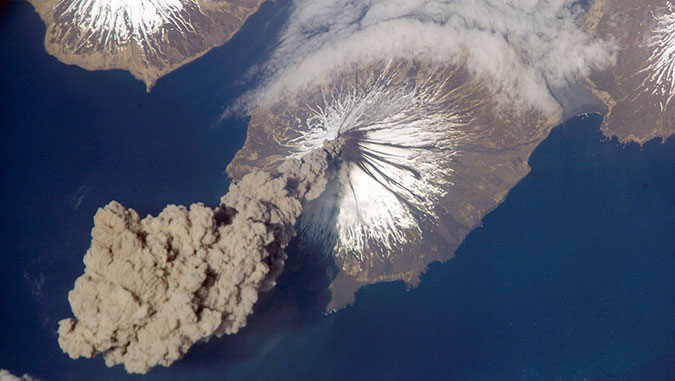
Predictions of future climate change require a clear and nuanced understanding of Earth's past climate. University of Hawaiʻi at Mānoa oceanographers solved a controversy that has been debated in scientific literature for decades by fully reconciling climate and carbon cycle trends of the past 50 million years. Their research was published in Science Advances.
Throughout Earth's history, global climate and the global carbon cycle have undergone significant changes, some of which challenge the current understanding of carbon cycle dynamics.
Less carbon dioxide in the atmosphere cools Earth and decreases weathering of rocks and minerals on land over long time scales. Less weathering should lead to a shallower calcite compensation depth (CCD), which is the depth in the ocean where the rate of carbonate material raining down equals the rate of carbonate dissolution (also called "snow line"). The depth of the CCD can be traced over the geologic past by inspecting the calcium carbonate content of seafloor sediment cores.
Former oceanography graduate student Nemanja Komar and professor Richard Zeebe, both at UH Mānoa's School of Ocean and Earth Science and Technology (SOEST), applied the most comprehensive computer model of the ocean carbonate chemistry and CCD to date, making this the first study that quantitatively ties all the important pieces of the carbon cycle together across the Cenozoic (past 66 million years).

Carbon cycle conundrum
Contrary to expectations, the deep-sea carbonate records indicate that as atmospheric carbon dioxide (CO2) decreased over the past 50 million years, the global CCD deepened, creating a carbon cycle conundrum.
"The variable position of the paleo-CCD over time carries a signal of the combined carbon cycle dynamics of the past," said Komar, lead author of the study. "Tracing the CCD evolution across the Cenozoic and identifying mechanisms responsible for its fluctuations are therefore important in deconvolving past changes in atmospheric CO2, weathering and deep-sea carbonate burial. As CO2 and temperature dropped over the Cenozoic, the CCD should have shoaled but the records show that it actually deepened."
Komar and Zeebe's computer model allowed them to investigate possible mechanisms responsible for the observed long-term trends and provide a mechanism to reconcile all the observations.
"Surprisingly, we showed that the CCD response was decoupled from changes in silicate and carbonate weathering rates, challenging the long-standing uplift hypothesis, which attributes the CCD response to an increase in weathering rates due to the formation of the Himalayas and is contrary to our findings," said Komar.
This research is an example of UH Mānoa's goal of Excellence in Research: Advancing the Research and Creative Work Enterprise (PDF), one of four goals identified in the 2015-25 Strategic Plan (PDF), updated in December 2020.






